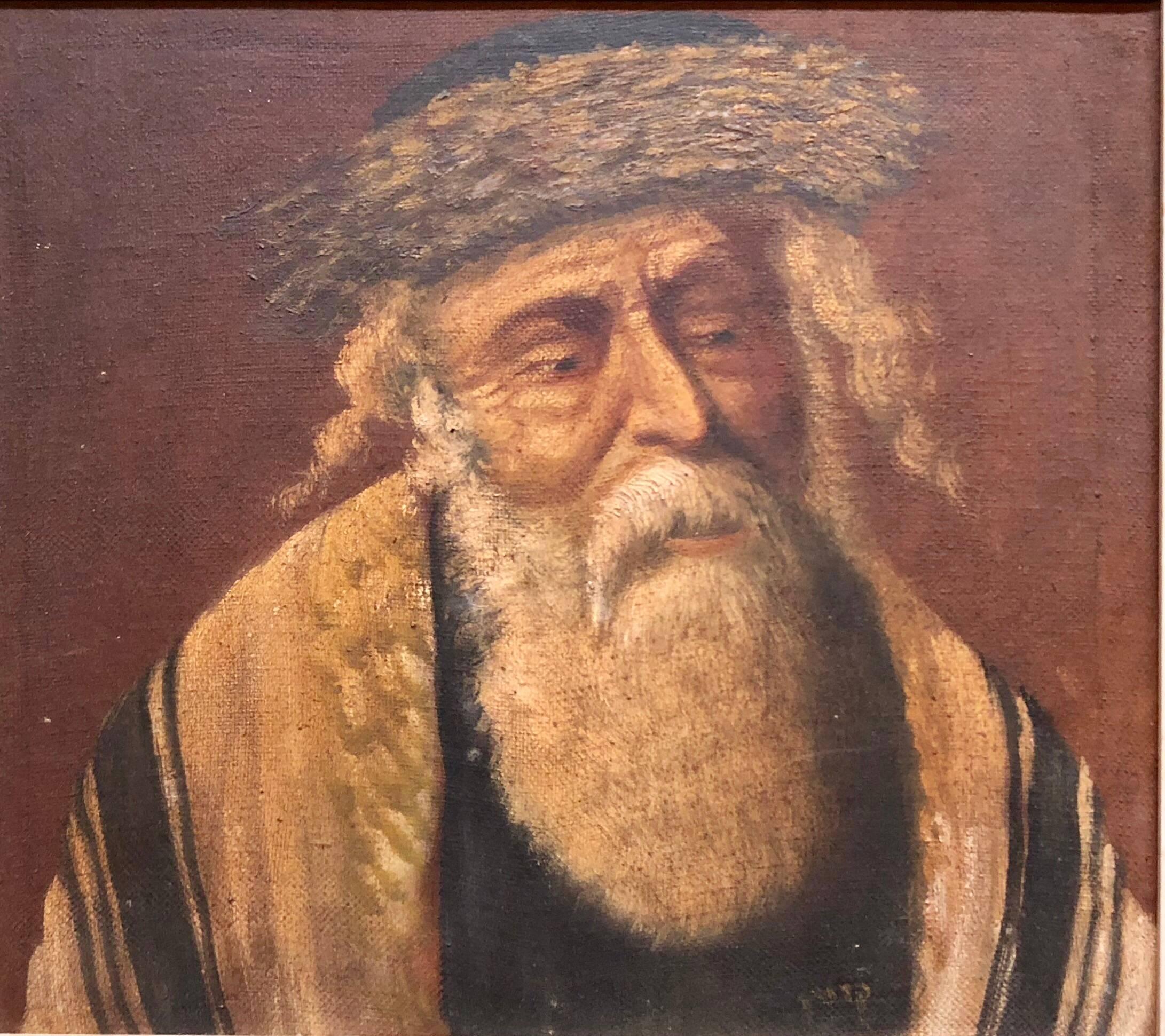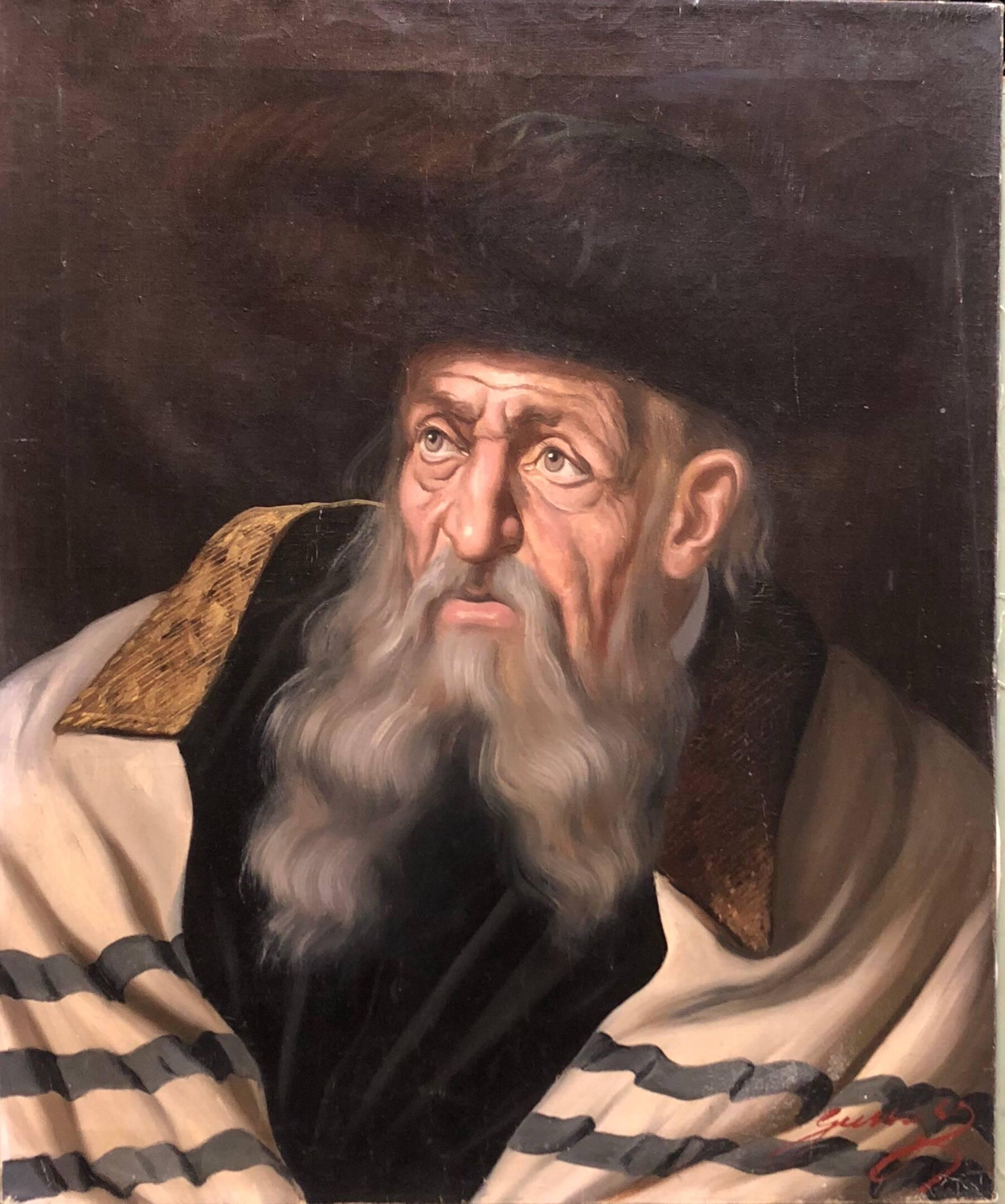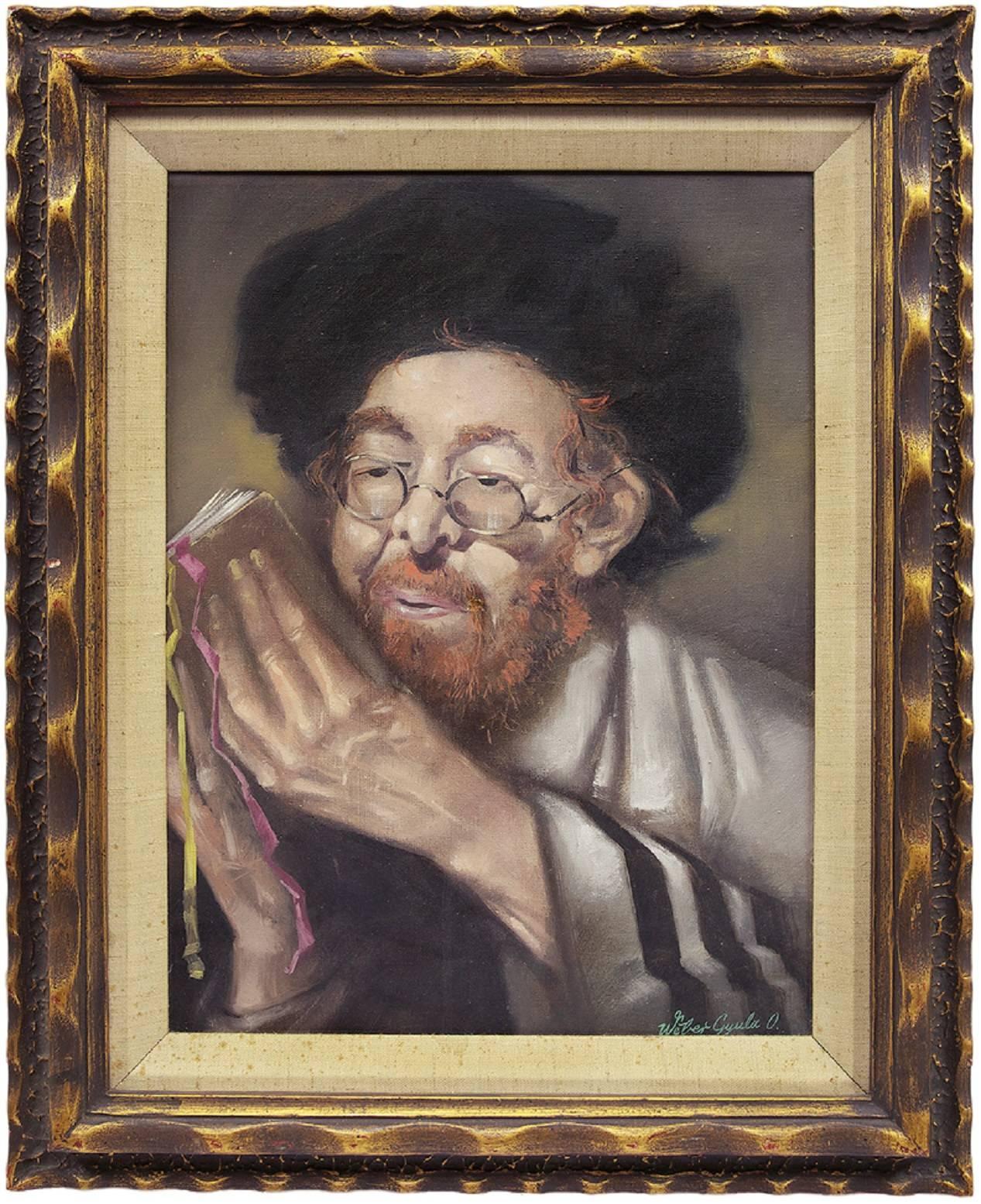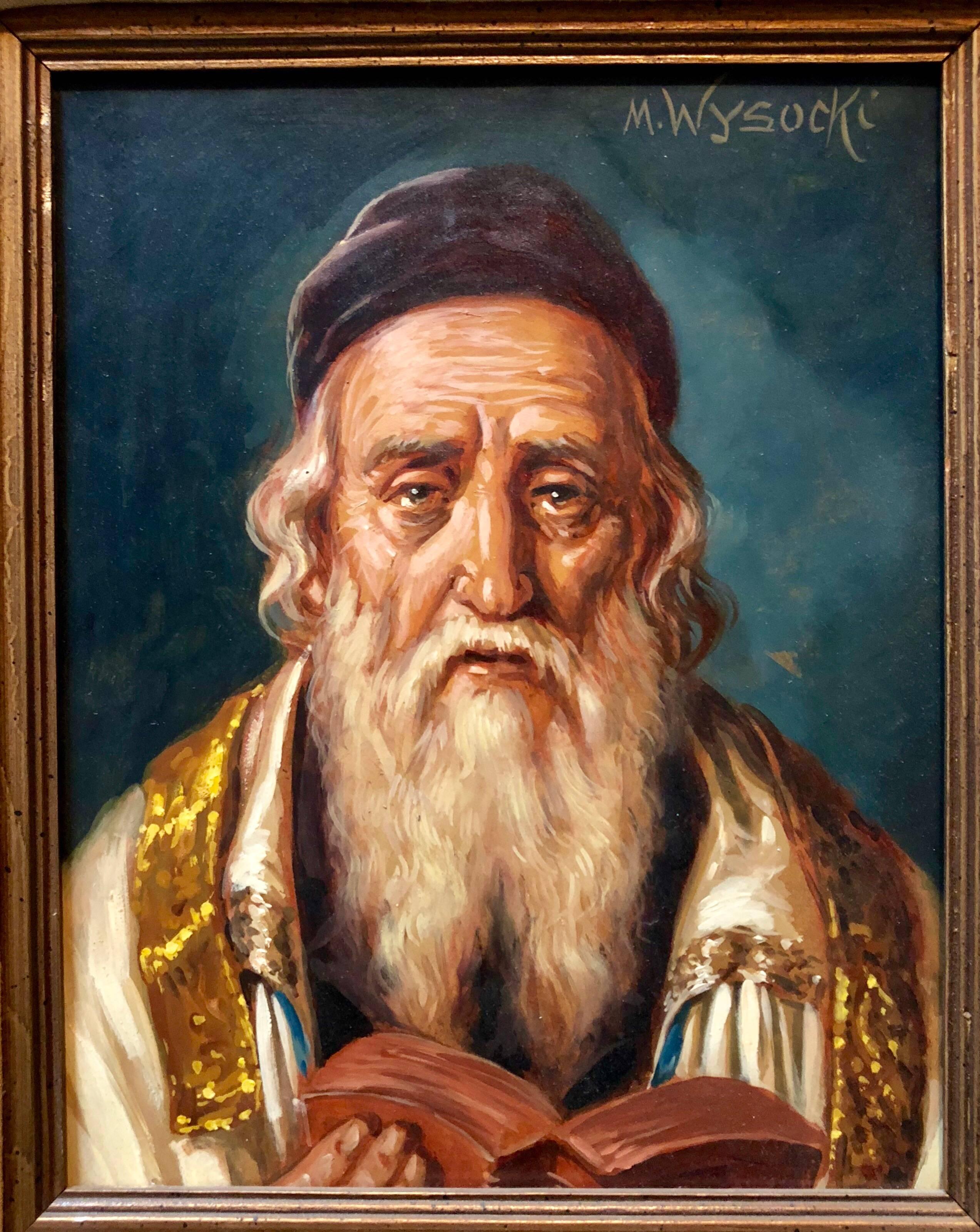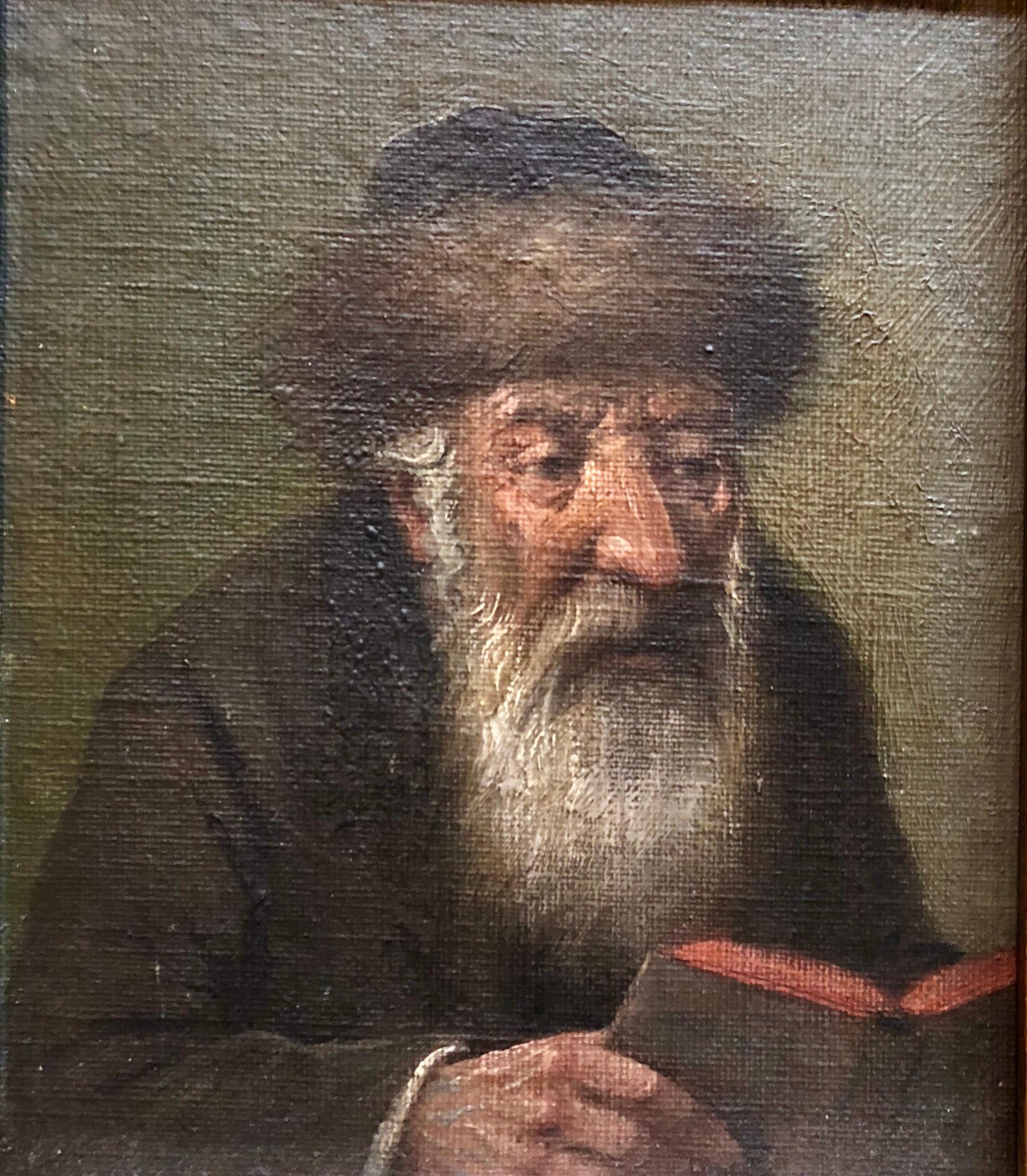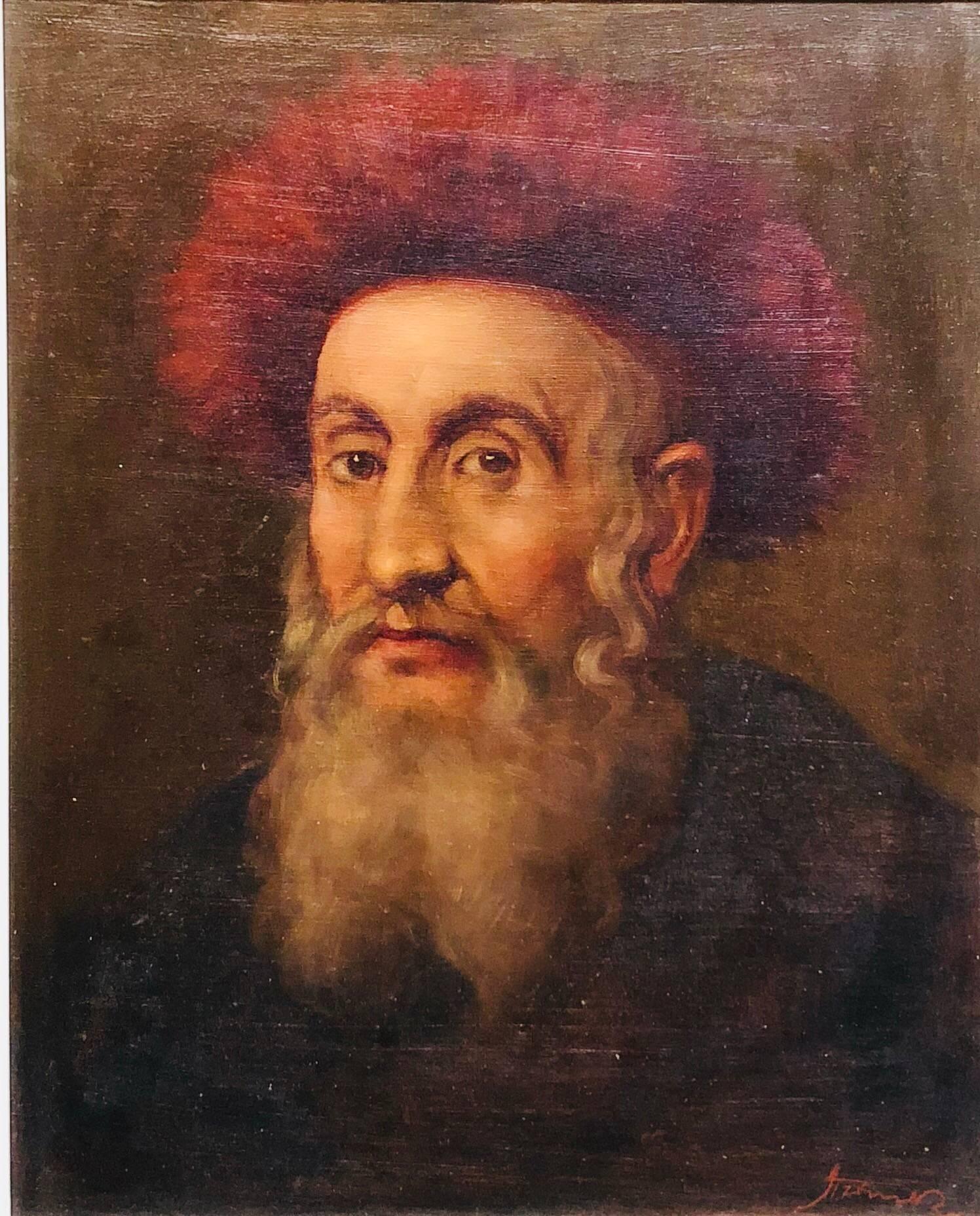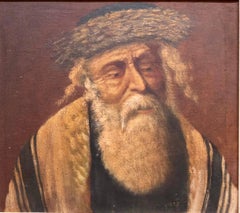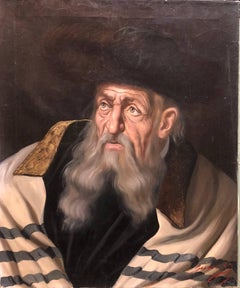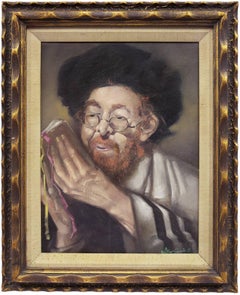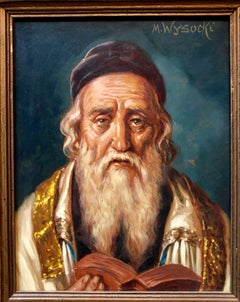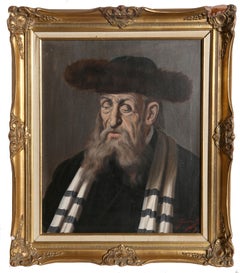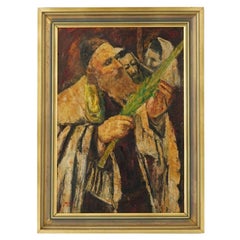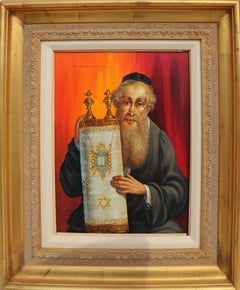Items Similar to Rare Hungarian Judaica Hasidic Rabbi with Shtreimel Pre War Oil Painting
Want more images or videos?
Request additional images or videos from the seller
1 of 7
UnknownRare Hungarian Judaica Hasidic Rabbi with Shtreimel Pre War Oil Painting
$1,800
£1,360.58
€1,563.54
CA$2,506.49
A$2,788.37
CHF 1,461.70
MX$34,073.15
NOK 18,612.88
SEK 17,521.45
DKK 11,671.27
Shipping
Retrieving quote...The 1stDibs Promise:
Authenticity Guarantee,
Money-Back Guarantee,
24-Hour Cancellation
About the Item
14.25 X 12.5 with frame. 8.75 X 7.25 without frame
- Dimensions:Height: 14.24 in (36.17 cm)Width: 12.5 in (31.75 cm)
- Medium:
- Movement & Style:
- Period:
- Condition:losses to frame. craquelure and darkening to varnish. Please see photos.
- Gallery Location:Surfside, FL
- Reference Number:1stDibs: LU38211751752
About the Seller
4.9
Platinum Seller
Premium sellers with a 4.7+ rating and 24-hour response times
Established in 1995
1stDibs seller since 2014
1,782 sales on 1stDibs
Typical response time: <1 hour
- ShippingRetrieving quote...Shipping from: Surfside, FL
- Return Policy
Authenticity Guarantee
In the unlikely event there’s an issue with an item’s authenticity, contact us within 1 year for a full refund. DetailsMoney-Back Guarantee
If your item is not as described, is damaged in transit, or does not arrive, contact us within 7 days for a full refund. Details24-Hour Cancellation
You have a 24-hour grace period in which to reconsider your purchase, with no questions asked.Vetted Professional Sellers
Our world-class sellers must adhere to strict standards for service and quality, maintaining the integrity of our listings.Price-Match Guarantee
If you find that a seller listed the same item for a lower price elsewhere, we’ll match it.Trusted Global Delivery
Our best-in-class carrier network provides specialized shipping options worldwide, including custom delivery.More From This Seller
View AllChassidic Rabbi with Shtreimel, Rare Judaica Oil Painting Signed in Hebrew
Located in Surfside, FL
Rare Judaica Art. Jewish genre scene. In the tradition of Moritz Oppenheim, Isidor Kauffman and Maurycy Gottlieb and later of Tully Filmus, Zalman Kle...
Category
Mid-20th Century Post-Impressionist Figurative Paintings
Materials
Oil
Hungarian Rabbi Judaica Oil Painting Hasidic Rabbi with Shtreimel
Located in Surfside, FL
20th century Jewish Chassidic Rabbi with fur hat portrait, Judaica Oil Painting
Category
20th Century Realist Portrait Paintings
Materials
Canvas, Oil
Hungarian Judaica, Hassidic Rabbi painting
By Weber Gyula
Located in Surfside, FL
Gyula Weber
Genre: Realism
Subject: Portrait
Medium: Oil
Surface: Canvas
Dimensions: 16" x 12" x 3/4"
Dimensions w/Frame: 21 1/4" x 17 1/4"
Category
20th Century Impressionist Figurative Paintings
Materials
Canvas, Oil
Austrian Judaica Portrait of Hasidic Rabbi Oil Painting
By M Wysocki
Located in Surfside, FL
Realistic portrait of an older rabbi by Polish Austrian artist M. Wysocki. Here the artist conveys a sense of quiet grandeur through the eyes of his subject and the way it's rendered. Part of a distinguished European lineage of Jewish genre artists who depicted judaic scenes sensitively and with a sense of quiet dignity. Lazar Krestin, Isidor Kaufmann...
Category
20th Century Realist Portrait Paintings
Materials
Oil, Panel
Pre World War II Austrian Judaica Oil Painting Hasidic Rabbi Portrait
By Rudolf Klinsbogl Klingsberg
Located in Surfside, FL
Rudolf KLINGSBÖGL Austrian Viennese painter and teacher. Chassidic rebbe with Shtreimel.
Klingsbogl was active in Vienna and is known for his typical portraits and paintings of interiors - workshops, pubs and cellars. His style is very distinctive. rare to find good jewish work that survived the holocaust as so much of it was destroyed.
Other works by Rudolf Klingsbogl (sometimes known as Klingsberg}: Rabbis Studying Around a Table, The Huntsman, The Pet Bird, Blacksmith Interior Scene, Three Men with Chat and Drink, The Sailors, The Old Drinker, Debating the News, Sunday Afternoon, Man Looking at Pocket Watch. Game of Cards in a Tavern, Wolfgang Amadeus Mozart as a Child, Franz Schubert at the Piano, Johann Strauss (The Younger).
Realistic portrait of an older rabbi visiting and blessing a child in a European marketplace...
Category
Early 20th Century Academic Portrait Paintings
Materials
Oil
Judaica "The Rebbe'" European Hasidic Rabbi Oil Painting
Located in Surfside, FL
Realistic portrait of an older rabbi visiting and blessing a child in a European marketplace. Here the artist conveys a sense of quiet grandeur th...
Category
20th Century Realist Portrait Paintings
Materials
Canvas, Oil
You May Also Like
Rabbi with a Fur Hat, Oil Painting by Jeno Gussich
Located in Long Island City, NY
Artist: Jeno Gussich, Hungarian (1905 - ??)
Title: Rabbi with a Fur Hat
Medium: Oil on Canvas, signed lower right
Size: 24 x 20 inches
Frame Size: 30.5 x...
Category
Mid-20th Century Realist Portrait Paintings
Materials
Oil
Judaica Portrait Oil Painting of a Rabbi Examining the Lulav Signed Rosendall
Located in Long Island City, NY
An oil painting on canvas representing a Judaica portrait of an old Rabbi, after the original oil painting, Examining the Lulav, . Signed by the artist, Rosendall, lower left. Framed...
Category
Antique 19th Century Unknown Paintings
Materials
Paint
$1,250 Sale Price
50% Off
Framed Polish Rabbi, Realist Oil Painting by Abraham Straski
By Abraham Straski
Located in Long Island City, NY
Artist: Abraham Straski, Polish (1903 - 1987)
Title: Untitled - Polish Rabbi
Year: 1952
Medium: Oil on Canvas, signed l.r.
Image Size: 16 x 12 inches
Frame Size: 26 x 20 inches
Category
1950s Post-War Portrait Paintings
Materials
Canvas, Oil
Rabbi and Torah, Oil Painting by Abraham Straski
By Abraham Straski
Located in Long Island City, NY
Artist: Abraham Straski, Polish (1903 - 1987)
Title: Rabbi and Torah
Year: circa 1957
Medium: Oil on Canvas, signed l.r.
Image Size: 16 x 12 inches
Frame Size: 26 x 20 inches
Category
1950s Post-War Portrait Paintings
Materials
Canvas, Oil
19th century Oil portrait of a Hungarian Rabbi
Located in Woodbury, CT
This 19th-century oil on panel portrait depicts a Hungarian Rabbi, characterized by his traditional attire and solemn expression. The Rabbi is portrayed with a long, white beard and ...
Category
1890s Old Masters Figurative Paintings
Materials
Oil, Wood Panel
Judaica Hungarian Oil Painting of a Rabbi By Miklos Mihalovits
Located in Long Island City, NY
Miklos Mihalovits, Hungarian, 1888 to 1960, an oil painting on canvas, Portrait of an old Rabbi. Signed lower left. Framed. Miklos Mihalovits is known for Figure, genre paintings. Miklos Mihalovits was a Hungarian painter born in 1888. Miklos pursued his studies at the High School of Applied Arts and the Benczur Master School, in Budapest. He also took in study tours in Italy and Germany. Miklos Mihalovits art is characterized by bright colours and temperamental shaping, which can be seen in his paintings of study heads for biblical compositions and nude figures. His work was exhibited from 1912 on. Miklos also participated in collective exhibitions in Budapest from 1929 through 1930. He was one of the founders of the National Saloon. European Fine Art...
Category
Antique 19th Century Unknown Paintings
Materials
Paint
$2,000 Sale Price
50% Off
More Ways To Browse
Pre War Art
Rabbi Painting
Judaica Oil Painting
Rabbi Oil
Framed Rabbi
1950s Portrait Oil Paintings
Spanish Village Painting
Vintage Cafe Sign
Figurative Crowd Paintings
Seen Graffiti
Paintings By Garcia
Oil Painting Man 19th Century
Mother And Child Oil Paintings
88 Gallery
Paintings Of Istanbul
Russian Paintings Soviet
Peasant Painting
Portrait Of Soldier
